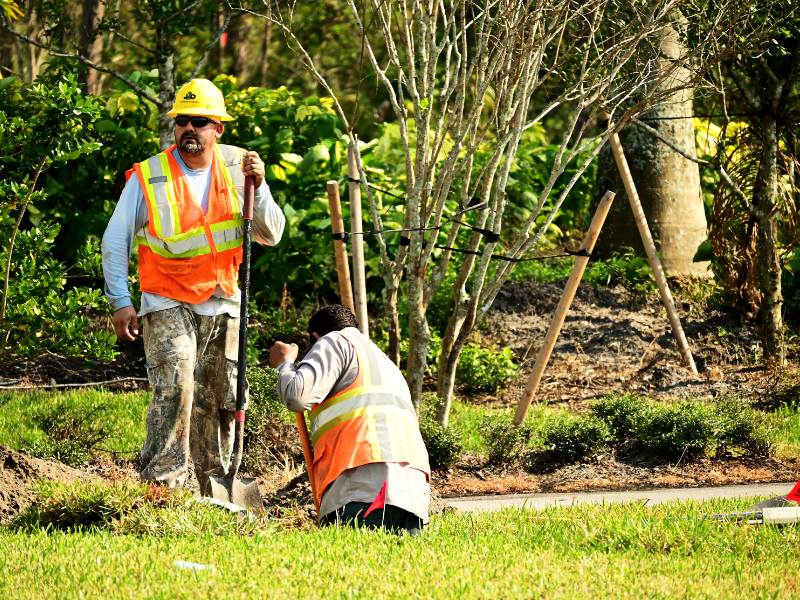What Does PEO Mean in Workers Comp?
A Professional Employer Organization (PEO) is a collaborative arrangement where a business partners with a PEO to streamline HR functions, including managing workers’ compensation insurance. In this co-employment relationship, the PEO assumes administrative responsibilities for workers’ compensation coverage for the business’s employees, often called “worksite employees.” This includes handling medical expenses, a portion of lost wages, employee rehabilitation, and even death benefits for workplace injuries or illnesses. By leveraging a PEO workers’ comp program, businesses also gain protection under the exclusive remedy doctrine, which shields both the PEO and the client from liability in employee injury lawsuits.
Employers with at least one employee are generally required to maintain workers’ compensation insurance. Through the PEO, claims administration—including filing claims, processing payments, and resolving disputes—is efficiently managed. However, the financial responsibility for funding the workers’ comp program typically remains with the business. Many PEOs also implement workplace safety initiatives to minimize risks and control workers’ comp costs. It’s important to note that in some jurisdictions, the PEO may bear additional liability for workplace injuries or illnesses depending on state regulations.
Workers’ compensation requirements vary by state, making it crucial for businesses to confirm that their PEO has the appropriate workers’ comp coverage in all operating locations. States differ in whether they allow private insurers, state funds, or both to provide workers’ comp policies. Employers can consult the U.S. Department of Labor for guidance on compliance with these state-specific regulations.
PEOs charge an administrative fee for their services, and the terms of the arrangement are detailed in a contract that outlines roles, responsibilities, fees, and provisions for resolving disputes or ending the agreement. This transparent arrangement ensures that both parties are clear on expectations.
Beyond workers’ compensation, PEOs offer additional services like payroll processing, tax filing, and employee benefits management, reducing the administrative burden for employers. By choosing a reliable PEO, businesses can streamline operations, reduce costs, and enhance the overall quality of employee benefits. Conducting thorough research and performing due diligence ensures that the selected PEO is well-suited to meet the business’s needs and compliance requirements.
This approach makes PEOs a valuable solution for managing workers’ compensation and other HR responsibilities, providing peace of mind for businesses while supporting their employees effectively.
What is The Relationship Between PEOs and Insurance Carriers, and How Might Workers’ Compensation Coverage Differ for Businesses That Use PEOs?
PEOs are able to provide workers’ compensation coverage through an insurance carrier that specializes in this type of protection.
The PEO pays the premiums and is responsible for any claims related to workplace injuries or illnesses. Depending on the specific agreement, businesses may either pay a portion of the premium directly or have it included in the overall fee paid to the PEO.
This arrangement is beneficial because it allows businesses to outsource much of their risk management and employee benefits responsibilities to a third party, which can free up time and resources to focus on other areas of business operations.
Additionally, as most states require employers to carry workers’ compensation insurance, partnering with a PEO ensures that businesses are in compliance with state regulations.
Since the PEO is responsible for any claims related to workplace injuries or illnesses, they typically have a strong risk management process in place that can help minimize potential liabilities.
Finally, partnering with a reputable PEO can often result in lower premiums than what businesses might be able to find on their own since the PEO has more buying power due to its size.
By working with a PEO, businesses can also gain access to employee benefits packages that might otherwise be unavailable to them. In addition to offering traditional health insurance coverage and 401(k) plans, many PEOs provide other types of services such as payroll processing, time and attendance tracking, recruiting, and legal advice.
Finally, PEOs are responsible for complying with all state and federal regulations related to employment, meaning businesses can rest assured that they won’t face any penalties or fines for non-compliance.
Benefits of a PEO
Overall, partnering with a PEO can be extremely beneficial for businesses of all sizes looking to streamline their operations and reduce operating costs.
By outsourcing many of the tedious and time-consuming tasks related to managing employees, businesses can save money and focus their energy on more important aspects of their operations.
Additionally, PEOs are often a great resource for small businesses that don’t have internal staff or resources dedicated to HR functions.
With all the advantages that come with working with a PEO, it’s no surprise that this type of arrangement has become increasingly popular in recent years.
With the right partner, businesses can maximize their efficiency and minimize their risk while ensuring the satisfaction of their employees.
One key advantage of working with a PEO is that they can help businesses stay compliant with both state and federal laws.
A PEO can provide access to specialized expertise in areas such as payroll, employee benefits, workers’ compensation, health insurance, and more. This can save businesses time and money by ensuring that all their HR operations are in compliance with the law.
Additionally, PEOs can help businesses manage risk by providing them with customized policies and procedures to ensure they are protected from legal liability and compliance issues. Finally, PEOs can give businesses access to a range of employee benefits that would otherwise be too expensive or complicated for a smaller business to afford on its own.
In short, working with the right PEO partner can help businesses maximize their efficiency and minimize their risk while ensuring the best possible employee experience.
With careful research and a solid understanding of their company’s goals, businesses can choose the right PEO partner for their specific needs.
How To Get PEO Workers Compensation Insurance
The best way to ensure that you have adequate PEO Workers Compensation Insurance is to work with a reputable PEO provider.
A good PEO will have access to various carriers, giving you the ability to compare rates and coverage levels in order to find the best match for your business.
To start, companies should be sure to ask potential partners about the services they provide, such as payroll processing, HR consulting services, risk management, and employee benefits.
They should also inquire about the pricing structure and any additional fees.
Businesses should research the PEO’s track record of success to determine how reliable they are and if they have any notable customer testimonials.
By doing their due diligence, companies can find a PEO partner that will help them achieve their goals while managing risk in a cost-effective manner.
Once an appropriate partner has been identified, both parties should establish clear expectations and agree on the terms of their relationship.
It is important that all relevant stakeholders are aware of the PEO’s role and responsibilities, as this will ensure that everyone understands how the partnership works and what each party’s respective obligations are.
Moreover, the terms should be laid out in a legally binding contract so that there is no ambiguity about the relationship.
Maximize the Benefits of PEO Partnerships Through Effective Monitoring and Oversight
Finally, companies should monitor their PEO partner’s performance to ensure that they are meeting their obligations and that all agreed-upon deliverables are being achieved. This will also give businesses an opportunity to identify any areas where the PEO could improve and adjust accordingly.
Overall, establishing a successful partnership with a PEO requires careful planning, communication, and continual oversight to ensure that both parties are getting the most out of the arrangement.
With clear expectations in place and effective monitoring protocols, companies can rest assured that their relationship with the PEO is a mutually beneficial one. With the right PEO partner, businesses can enjoy a streamlined workflow and improved human resources management while saving time and money.
It is important to remember that a PEO relationship is not like a traditional employer-employee relationship.




